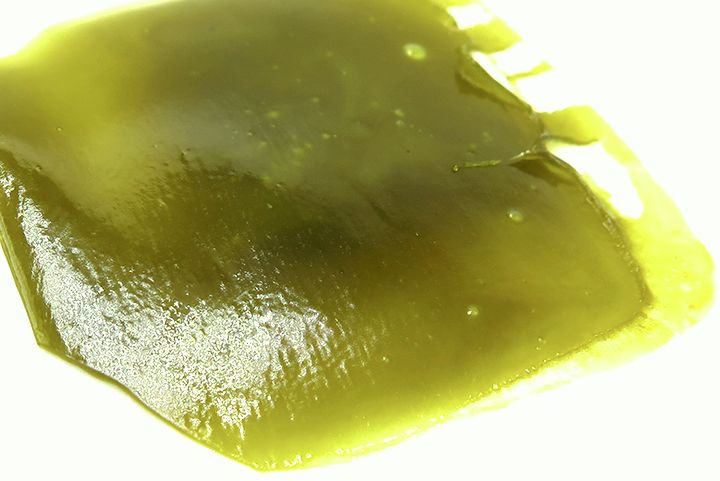Judging rosin quality by sight alone is impossible.
Generally, clearer rosin is considered higher quality, but that is not always the case.
While discoloration can be a sign of impurities, it can also simply be a result of the particular strain from which the solventless hash oil (SHO) was extracted.
Nevertheless, if you see discoloration in your extract, there may be an issue that needs to be fixed.
Here are the factors that affect clarity in order of their impact.
Factors Affecting Rosin Clarity
-
Quality of the input material—higher quality input means higher quality output
-
Age of the input material—the best time to process material is right after it has finished drying and curing
-
The temperature at which the material is pressed—lower temperatures mean better clarity, but lower yields
To see how these may affect the final product, we will look at the most common questions we get regarding rosin quality and go over possible causes and solutions for each issue. Head here for a detailed guide on making rosin.
The most common questions we get:
Why Is My Rosin Green?

A greenish color is usually the result of plant matter in the SHO.
If you are pressing flower and are grinding them up beforehand, stop doing that first. There is no need to grind your flower.
In fact, it is better to just press the whole buds. If you have stems sticking out, remove those, but otherwise, you can leave the bud as is.
Another way to reduce or eliminate plant matter in your final product is to use a filter bag with a lower micron count. For trim, leaves, and shake, you want to use a bad with a micron count between 120 and 220. For flower, you generally want to use a 90 to 120 micron bag.
It is perfectly fine to press flowers without using a bag, but if you are getting green extract, try using a bag. If your issue is plant material in the final product, then using a bag (with a low enough micron count) should solve it.
Read this article for much more on micron sizes for extraction bags.
You could also simply be pressing material that is too fresh. If it smells like freshly cut grass, then this is probably the case.
You’ll want to let the material sit in a jar for a few weeks and give it some time to cure (read about curing here). Conversely, you don’t want to use material that is too old either. Ideally, it should be pressed soon after the cure is complete.
Temperature may be another cause. If you are using a plate temperature over 190°F for flowers, try reducing it to below 190°F. Lowering the temperature will reduce yields, but if you are having issues with green rosin, it is worth trying.
Another possible issue may be that you are applying too much pressure too quickly. Start with a low amount of pressure and hold it for 5 to 10 seconds, to let the plates warm up the material. Then increase the pressure a bit and hold it for another 5 to 10 seconds. Keep gradually increasing the pressure over the course of a minute or two, until you’ve reached full pressure.
You'll find much more on temperature and pressure here.
Finally, it could just be a matter of contamination. Check to make sure there is no plant material on the outside of your bag and also clean the pressing surface to ensure there is no leftover material from previous extractions.
If none of these are the issue, it may also just be the input material you are using. Try a different input material and see if the final product is still colored green.
Why Is My Rosin So Dark?

Dark rosin is not necessarily a bad thing. Some high-quality material that has gone through a long curing process can result in extremely high-quality dark rosin.
That said, anyone asking why their rosin is dark is probably doing so because the quality is not high. In that case, there are two main reasons why the final product ends up being dark.
The first is the input material. As mentioned, this could be a good thing, but if you are getting poor-quality dark extract, it may be due to low-quality material or material that is too old. Try pressing different materials to see if you still get dark extract.
The second is the pressing temperature. Using a temperature that is too high will result in a darker extract. Try to keep the temperature below 220° Fahrenheit. If it is below that mark and the resulting SHO is still dark (and it’s not the material), then try reducing the temperature further or shortening the pressing time.
Rosin that is exposed to high temperatures for too long loses terpenes, so you definitely want to make sure this is not the cause of the dark color.
You also want to gradually increase the pressure. Pressing down really hard, really fast, burns the oil. You need to give it time to heat up as you press.
Applying pressure gradually also ensures that the material in the middle receives the same temperature and pressure treatment as the material on the outside. When you press down too quickly, the oils on the outside start to burn in the time it takes the material in the center to heat up enough to excrete rosin.
Finally, using a smaller screen size (bag micron count) will also help filter out impurities and may reduce or eliminate the dark color.
Why Is My Rosin So Sticky?

First of all, even if it’s sticky, don't throw it away. Let it sit for a few days. It will dry out a bit and become easier to collect.
You should also put it in the freezer before collecting it. Freezing it makes it much easier to scrape up.
If you don't always get sticky rosin, but have been with a new strain, then that is most likely the culprit. Some strains simply produce stickier extract than others.
If it’s not that (i.e., you get sticky extract with different strains), then try reducing temperature and pressure and see if it makes a difference. Combine the reduction in pressure and temperature with an increase in pressing time.
Why Is My Rosin Harsh?
Some people find larger rosin dabs a bit harsh. If that’s the case for you, try reducing the size of the dab. That should help a lot.
If you find that even small amounts are especially harsh, try changing the material you are pressing. Nothing has a greater impact on the flavor of your output than the input material.
Reducing the temperature and/or using bags with a lower micron count will also improve the flavor. Naturally, there is a trade-off: both lower temperatures and a lower micron bag will reduce yields. As always, the key is to find the best balance between yield and flavor.
Additional Questions
These are additional questions we get asked, where the answer is the same as one of the questions already discussed above
Why Is My Rosin Runny?
Everything written above for sticky rosin applies to runny products as well. The two result from the same issue: too much moisture in the extract.
Why Is My Rosin Sappy?
Sappy rosin is also caused by too much moisture, so you’ll once again want to follow the guidelines above for sticky products.
Why Is My Rosin Oily?
Oily rosin is another instance where you’ll want to follow the same guidelines above.
We like to think of rosin extraction as an art more than a science. There is no ideal combination of pressure, pressing time, and temperature. Every strain is different and needs to be processed differently. Then you have to factor in personal tastes and preferences: one person may prefer a harsher solventless hash oil than another.
The best way to ensure a high-quality extract is to have a large amount of input material to work with. That way, you can press small amounts at a time while experimenting with pressure, time, and temperature until you find the perfect combination for your strain and your tastes.
Once you've dialed in the combination that gives you the exact balance between yield amount and yield quality you strive to achieve, remember those settings (or save them if your press has a preset function) and use them for the rest of the material.
That's how you get the highest-quality extract. For a step-by-step guide on the actual pressing process, head here.
Do you have any additional questions regarding the quality or appearance of your extract? If so, let us know in the comments below. We'll be happy to update the article with your answers.












Comments
Leave a comment